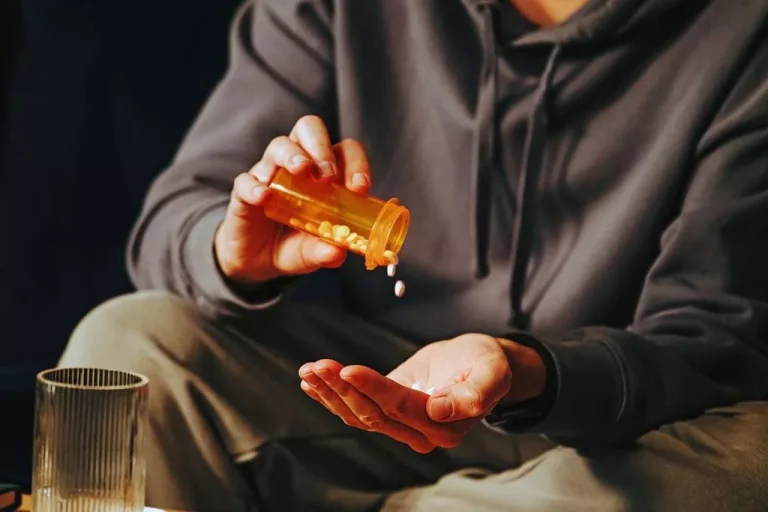Substance Use Disorder, Intravenous Injection, and HIV Infection: AReview PMC

The panel met twice for face-to-face meetings and conducted teleconferences on 6 occasions to complete the work of the guideline. The purpose of the teleconferences was to discuss the clinical questions to be addressed, assign topics for review and writing of the initial draft, and discuss recommendations. The guideline was reviewed and approved by the IDSA Standards and Practice Guidelines iv drug use Committee (SPGC) and Board of Directors and endorsed by the Pediatric Infectious Diseases Society (PIDS). Panel members were divided into pairs, consisting of primary and secondary authors. Each author was asked to review the literature, evaluate the evidence, and determine the strength of the recommendations along with an evidence summary supporting each recommendation.

HIV and Specific Populations

Participants described how they obtain antibiotics from non-traditional sources. I wait until they get really big and the surface skin is bulging out and it’s all red, except for the tip is white where it’s the thinnest. And I feel around on it to feel where it’s still soft and where it’s still … around the edges your tissue is swelled up.
- These infections cause rapidly spreading areas of erythema, swelling, tenderness, and warmth, sometimes accompanied by lymphangitis and inflammation of the regional lymph nodes.
- There were fewer treatment-related AEs in omadacycline-treated patients (21%) compared with the linezolid group (30.6%), the most common of which were GI related (18.9% omadacycline, 18.5% linezolid).
- GRADE is a newly created system for grading the quality of evidence and strength of recommendations for healthcare [2, 11].
- Additional studies of the efficacy of IVIG are necessary before a recommendation can be made supporting its use in this setting.
- Ideally, the authors would have conducted subsequent interviews, further exploring the specific topic of interest and reaching saturation in these communities.
- As the disease progresses, cutaneous necrosis and crepitus, indicating gas in the soft tissue, may develop.
- Always consult your healthcare provider to ensure the information displayed on this page applies to your personal circumstances.
Browse treatment options
This study does have some limitations and is primarily exploratory and hypothesis generating. First, this is a secondary analysis of qualitative data obtained for a separate, but related study. Ideally, the authors would have conducted subsequent interviews, further exploring the specific topic of interest and reaching saturation in these communities. Future investigations should purposively seek the perspectives of people of all genders, races, and ethnicities. The study was also limited to two metropolitan areas, and while they are distinct from one another, they do not represent all communities of PWID. Particularly in nuanced topics like this, more geographic diversity would benefit the generalizability of the findings.
Clinical Presentation
Infections range from simple abscesses and uncomplicated cellulitis to life-threatening and limb-threatening infections. These infections are predominantly caused by gram-positive organisms with Staphylococcus aureus, Streptococcus pyogenes, and other streptococcal species being most common. Although antimicrobial therapy has an important role in treatment of these infections, surgical incision, drainage, and debridement of devitalized tissue are primary. Strategies that decrease the frequency of injection drug use, needle sharing, use of contaminated equipment, and other risk behaviors may be effective in preventing these infections in persons who inject drugs. In summary, in this contemporary cohort, cutaneous abscesses among injection drug users were less likely to involve S.
Third, this study is a secondary analysis of qualitative themes that emerged during the initial data collection. However, given that the initial focus of this project was not self-care per se, saturation was not reached on this theme and many novel codes continued to emerge in retrospective analysis. SSTI self-care is individualized and multifaceted and achieving saturation would likely require a much larger cohort, specifically targeted for diversity of self-care experiences. Unfortunately, the researchers did not have the ability to expand the qualitative cohort at this stage of the project, so only our initial exploratory findings are presented here. Lastly, this study relies heavily on participants’ recollection, and is susceptible to recall bias, particularly for these traumatic and emotionally charged events. Many participants also described the progression from cellulitis (which cannot be drained) to an abscess, which requires drainage in some capacity.
The fascia at the time of direct visual examination is swollen and dull gray in appearance with stringy areas of necrosis; a thin, brownish exudate may be present. Extensive undermining of surrounding tissues is usually present, and the tissue planes can be readily dissected with a gloved finger or a blunt instrument. Several clinical scoring systems have been proposed, but all of these are more useful for excluding necrotizing soft tissue infections than identifying them. Participants also reported a variety of techniques to treat themselves in the absence of medical care, ranging from non-invasive to invasive procedures.
Side Effects of HIV Medicines
- In addition, because of an increasing number of immunocompromised hosts worldwide, the guideline addresses the wide array of SSTIs that occur in this population.
- Whileintravenous injection is a frequently discussed risk factor in the HIV-related literature,it is a much less frequent topic in the addiction literature.
- This is primarily due to decreased susceptibility of MRSA to fluoroquinolones, which highlights the need for additional treatment options for skin infections that are caused by fluoroquinolone-resistant organisms [23].
- Discrimination, unaddressed pain, fear of withdrawal, and stigma are all reasons why PWID delay seeking care from medical professionals [1, 26].
Oritavancin has activity against gram-positive organisms, and its long elimination half-life allows for single-dose treatment [44]. The safety of oritavancin was evaluated in 2 phase 3 studies enrolling 976 oritavancin patients and 983 vancomycin patients [44]. From the safety database, the incidences of AEs, serious AEs, and discontinuations due to AEs were similar for oritavancin and vancomycin. The most frequently reported AEs were nausea, headache, and vomiting [44]. Single-dose oritavancin has shown similar efficacy to that of twice-daily vancomycin at both early clinical and end-of-therapy time points [45]. Cutaneous manifestations of acute progressive disseminated histoplasmosis are rare and usually occur in patients with severe cellular immune deficiency [237, 238].
Practice Guidelines

Most patients with necrotizing fasciitis should return to the operating room 24–36 hours after the first debridement and daily thereafter until the surgical team finds no further need for debridement. Although discrete pus is usually absent, these wounds can discharge copious amounts of tissue fluid, and aggressive fluid administration is a necessary adjunct. Understanding and addressing the root of why PWID partake in self-care is essential. One key factor to delay is past or perceived negative experiences arising from contact with medical providers. Discrimination, unaddressed pain, fear of withdrawal, and stigma are all reasons why PWID delay seeking care from medical professionals [1, 26]. The most important strategy health providers at all levels can employ is to reach out to spaces that are low-threshold for PWID or work to educate other healthcare providers and change their local culture to create inclusive environments and provide positive medical experiences for PWID.
- However, there is considerable batch-to-batch variation of IVIG in terms of the quantity of neutralizing antibodies, and clinical data of efficacy are lacking [118].
- Drugs and alcohol use affect the brain, making it hard to think clearly.
- Commonly reported reasons for delaying treatment include stigma and discrimination from health care providers [1].
- Acknowledging the reality of these behaviors and embracing a harm reduction approach, educational interventions should be tailored towards spreading and improving upon this working knowledge through peer teaching and materially supporting PWID.
- The clinician must ensure that a deeper infection such as necrotizing fasciitis is not present.
- Evaluation of such relationships as potential conflicts of interest is determined by a review process that includes assessment by the SPGC chair, the SPGC liaison to the development panel and the board of directors liaison to the SPGC, and, if necessary, the Conflict of Interest (COI) Task Force of the Board.
